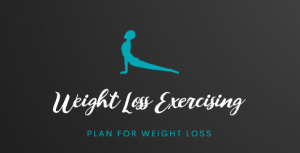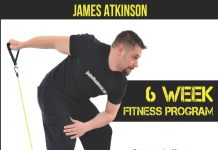Looking to optimize your fitness routine? Wondering how to divide your workouts for maximum effectiveness? Look no further! In this article, we will explore different strategies for splitting up your workouts to achieve your fitness goals. Whether you’re aiming to build muscle, improve endurance, or enhance overall fitness, we’ve got you covered. Get ready to discover the secrets to designing a workout plan tailored specifically to your needs. So, let’s get started and unlock the key to maximizing your workout potential!
Review contents
Considerations for Splitting Up Workouts
When it comes to splitting up workouts, there are several important considerations to keep in mind. Tailoring your workout plan to fit your individual goals, time availability, fitness level, and training style can greatly enhance your overall progress and satisfaction with your workouts. By carefully considering these factors, you can create a workout routine that is both effective and enjoyable.
Goals
The first consideration when splitting up workouts is to determine your goals. Are you aiming to lose weight, gain muscle, improve endurance, or increase strength? Your goals will play a significant role in how you structure your workouts. For example, if your primary goal is to gain muscle, you may opt for a split routine that focuses on specific muscle groups each day. On the other hand, if your goal is weight loss, you might prioritize cardiovascular exercises and incorporate strength training on separate days.
Time Availability
Another important factor to consider is the amount of time you have available for workouts. If you have limited time, full-body workouts or shorter, more intense sessions may be more suitable. On the other hand, if you have more flexibility in your schedule, you can allocate specific days for different muscle groups or types of exercises. Assessing your time availability will help you determine which split routine will work best for you.
Fitness Level
Your current fitness level should also guide your decision when splitting up workouts. If you’re just starting out or have a lower fitness level, it’s important to gradually increase the intensity and duration of your workouts. Starting with full-body workouts or an upper/lower split can help you build a solid foundation before moving on to more advanced split routines. Conversely, if you have a higher fitness level, you may be able to handle more volume and intensity, allowing for more specialized muscle group splits.
Training Style
Finally, considering your training style can significantly impact your workout split decisions. Some individuals thrive on variety and enjoy changing their workouts frequently, while others prefer consistency and sticking to a routine. Your training style will determine the level of variety and flexibility you incorporate into your workouts. Experimenting with different split routines can help you determine which training style suits you best.
Muscle Group Split
When it comes to split routines, different muscle group splits can be effective for targeting specific areas and achieving desired results. The following are some common muscle group splits that you can consider:
Full Body Workouts
Full body workouts involve targeting all major muscle groups in a single workout. This approach is ideal for individuals with limited time availability or beginners who want to establish a solid foundation. Full body workouts can be performed two to three times a week, allowing for adequate rest and recovery between sessions.
Upper/Lower Split
An upper/lower split involves focusing on the upper body muscles on certain days and the lower body muscles on other days. This split enables you to allocate more time and energy to each muscle group while still allowing for adequate recovery. Upper/lower splits are often performed three to four times a week, alternating between upper and lower body workouts.
Push/Pull/Legs Split
The push/pull/legs split divides workouts into three categories: push exercises (chest, shoulders, triceps), pull exercises (back, biceps), and leg exercises. This split allows for greater focus and volume on specific muscle groups, creating a more targeted approach. It can be performed three to six times a week, depending on your fitness level and goals.
Body Part Split
A body part split involves dedicating specific days to different muscle groups. This split is commonly used by individuals looking to build muscle mass and strength in specific areas. For example, you may have a day dedicated to chest and triceps, another day for back and biceps, and so on. Body part splits are typically performed four to six times a week, allowing for focused training and ample recovery time.
Cardiovascular Exercise
In addition to strength training, cardiovascular exercise is an essential component of any well-rounded workout routine. When splitting up workouts, it’s important to consider how to incorporate cardiovascular exercises effectively. Here are some considerations for integrating cardio into your workout split:
Separate Days
One option is to schedule separate days specifically for cardiovascular exercise. This allows you to focus exclusively on cardio during those sessions, ensuring you give it the attention it deserves. By dedicating specific days to cardio, you can structure your workouts accordingly and vary the intensity and duration to best suit your goals.
Combining with Strength Training
Another approach is to combine cardiovascular exercise with strength training on the same day. This can be done by either performing cardio before or after your strength training session. Some individuals prefer doing cardio as a warm-up to gradually increase their heart rate and prepare their body for strength exercises. Others prefer doing cardio after strength training to maximize fat burning potential. Experiment with different approaches to find what works best for you.
Interval Training
Interval training is a highly efficient method of cardiovascular exercise that involves alternating between periods of high intensity and periods of active recovery. This type of training can be incorporated into your workout split by using intervals during cardio sessions or even incorporating interval-style strength exercises. Interval training not only improves cardiovascular fitness but can also increase calorie burn and stimulate muscle growth.
Frequency and Rest Days
Determining the frequency of your workouts and incorporating rest days is crucial for optimizing performance, recovery, and overall progress. Here are some factors to consider:
Training Frequency
The number of times per week you engage in workouts will depend on your goals, time availability, and fitness level. It’s important to find a balance that allows for consistent progression while still providing enough rest and recovery. A good rule of thumb is to aim for at least two to three days of rest per week to prevent overtraining and allow your body to repair and grow.
Active Rest Days
Rest days don’t necessarily mean complete inactivity. Active rest days can involve engaging in low-intensity activities such as walking, stretching, yoga, or light swimming. These activities promote blood flow, aid in recovery, and help prevent muscle stiffness. Active rest days also provide a mental break while still keeping you active.
Complete Rest Days
Complete rest days are just as important as active rest days. They involve abstaining from any structured workouts or physical exertion. Complete rest days give your body and mind a chance to recharge and fully recover. It’s essential to listen to your body and recognize when it needs a break to avoid burnout and injuries.
Workout Order
The order in which you perform exercises can significantly impact your workout’s effectiveness and safety. Here are some considerations for determining the optimal workout order:
Compound Exercises First
Compound exercises, which involve multiple muscle groups and joints, should be prioritized at the beginning of your workouts. These exercises generally require more energy and effort and should be performed while you’re fresh and have sufficient strength. Compound exercises include movements like squats, deadlifts, bench presses, and rows.
Isolated Exercises Last
Isolated exercises, which target specific muscle groups, can be performed towards the end of your workouts. These exercises typically require less weight and exertion compared to compound movements. Prioritizing compound exercises first allows you to maximize your energy and focus on the most challenging and beneficial movements.
Alternating Opposing Muscle Groups
Another approach to workout order is to alternate between exercises that target opposing muscle groups. For example, pairing a chest exercise (push) with a back exercise (pull) allows you to work different muscle groups while giving some muscles a brief rest. This approach can help maintain balance and prevent fatigue in specific muscle groups.
Exercise Selection
The exercises you choose to include in your workouts play a vital role in achieving your fitness goals. Here are some considerations for exercise selection:
Focus on Compound Movements
Prioritizing compound movements in your workouts allows you to work multiple muscle groups simultaneously and engage more secondary muscles. These exercises provide a more efficient and effective full-body workout. Squats, deadlifts, lunges, bench presses, rows, and pull-ups are some examples of compound movements.
Include Isolation Exercises
While compound movements should generally form the foundation of your workouts, including isolation exercises can help target specific muscles and improve muscle symmetry and definition. Bicep curls, tricep extensions, calf raises, and lateral raises are some examples of isolation exercises. It’s important to strike a balance between compound and isolation exercises to achieve a well-rounded workout routine.
Variety and Progression
Maintaining variety in your exercise selection is important for avoiding plateaus and keeping your workouts interesting. Incorporate different variations of exercises, such as dumbbell presses instead of barbell presses or lunges instead of squats, to challenge your muscles in new ways. Additionally, implementing progressive overload, such as increasing weights or repetitions, ensures you continue making progress in your workouts.
Duration and Intensity
Considering the duration and intensity of your workouts is crucial for achieving your fitness goals while avoiding burnout or injury. Here are some factors to consider:
Workout Duration
The duration of your workouts will depend on factors such as your goals, time availability, and fitness level. Generally, an effective workout can be completed within 45 minutes to an hour. However, the duration may vary depending on factors such as exercise selection, training intensity, and rest intervals. It’s important to find a balance that allows you to work effectively without compromising form or pushing yourself too hard.
High Intensity vs. Low Intensity
Training intensity refers to the level of effort and challenge you put into your workouts. Both high-intensity and low-intensity workouts have their benefits, and the choice depends on your goals and preferences. High-intensity workouts involve pushing yourself to near-maximum effort, promoting strength gains and cardiovascular fitness. Low-intensity workouts, such as steady-state cardio or light resistance training, can be beneficial for recovery and promoting fat-burning.
Progressive Overload
To continue making progress and improving your fitness level, it’s important to incorporate progressive overload into your workouts. Progressive overload involves gradually increasing the intensity, duration, or volume of your workouts over time. This can be done by increasing weights, adding repetitions or sets, decreasing rest time, or challenging yourself with more advanced variations of exercises. By progressively overloading your muscles, you stimulate growth and adaptability.
Warm-Up and Cool Down
Incorporating a proper warm-up and cool down routine into your workouts is essential for injury prevention, performance optimization, and overall workout quality. Here are some components to consider:
Dynamic Warm-Up
A dynamic warm-up involves actively moving your muscles and joints to increase body temperature, heart rate, and blood flow. It prepares your body for the upcoming workout, enhances mobility, and reduces the risk of injury. Dynamic warm-up exercises can include arm swings, leg swings, bodyweight lunges, or gentle jogging to gradually increase the intensity.
Mobility Exercises
Mobility exercises focus on improving joint range of motion and flexibility. Including mobility exercises in your warm-up routine can help optimize movement patterns, decrease stiffness, and enhance overall performance. Examples of mobility exercises include hip circles, shoulder dislocates, thoracic spine twists, and ankle rotations.
Static Stretching
Static stretching involves holding a stretch position for a certain duration, typically 20-30 seconds, to improve muscle length and flexibility. While static stretching is often performed after workouts as part of the cool-down routine, it has been debated whether static stretching before a workout is beneficial or detrimental to performance. Incorporating static stretches after your workouts can help relax the muscles and prevent excessive tightness.
Foam Rolling
Using a foam roller to perform self-myofascial release during your warm-up or cool down can help release muscle tension, reduce muscle soreness, and enhance flexibility. Foam rolling targets trigger points or knots in the muscles, breaking up adhesions and promoting better blood flow. It’s an excellent practice to incorporate before and after workouts.
Splitting Up Home Workouts
For those who prefer working out from the comfort of their own homes, splitting up workouts is still possible. Here are some considerations for splitting up home workouts:
Utilizing Equipment
If you have access to home gym equipment, you can structure your split routine similarly to a gym-based routine. Utilize dumbbells, resistance bands, stability balls, and other equipment to target different muscle groups and perform a variety of exercises. The advantage of home workouts is the convenience and flexibility it offers, allowing you to tailor your routine to your preferences and needs.
Bodyweight Exercises
If you don’t have access to gym equipment, bodyweight exercises can serve as a highly effective and versatile alternative. Bodyweight exercises such as push-ups, squats, lunges, planks, and burpees can target multiple muscle groups simultaneously and provide an intense workout. Combining different bodyweight exercises in a split routine can help you achieve your fitness goals without requiring any additional equipment.
Circuit Training
Circuit training involves performing a series of exercises in a specific order with minimal rest periods in between. This type of training is ideal for home workouts as it allows you to target various muscle groups, elevate your heart rate, and improve cardiovascular fitness. By combining bodyweight exercises or utilizing household objects as makeshift weights, you can design circuit workouts that provide an effective and time-efficient workout.
Seeking Professional Advice
While designing your own workout plan can be a rewarding and fulfilling experience, seeking professional advice can provide valuable insights and expertise. Consider the following options when looking for guidance:
Personal Trainer
A personal trainer can help create a customized workout plan tailored to your specific goals, fitness level, and preferences. They have the knowledge and expertise to design effective workouts, provide guidance on proper form and technique, and adjust your routine as you progress. Working with a personal trainer can enhance your workout experience and help you achieve optimal results.
Sports Coach
If you have specific athletic goals, such as improving performance in a sport, seeking guidance from a sports coach can be highly beneficial. Sports coaches specialize in developing training programs that focus on sport-specific movements, strength, and conditioning. They can provide structured plans that target the areas most important to your chosen sport and help you reach your athletic potential.
Alternative Fitness Experts
In addition to personal trainers and sports coaches, there are numerous alternative fitness experts available to provide guidance and inspiration. This includes yoga instructors, Pilates instructors, dance instructors, and other professionals who specialize in specific fitness disciplines. Exploring these alternatives can add variety and new challenges to your workout routine.
In conclusion, splitting up workouts requires careful consideration of various factors such as goals, time availability, fitness level, and training style. By understanding and addressing these considerations, you can create a workout plan that is well-suited to your individual needs and preferences. Whether you choose a muscle group split, incorporate cardiovascular exercise, determine workout frequency and rest days, select the optimal workout order and exercise selection, or focus on duration, intensity, warm-up, and cool down, your comprehensive approach to splitting up workouts will contribute to your overall fitness journey. Remember, seeking professional advice can also provide guidance and support, enhancing your workout experience and helping you attain your desired results.



























